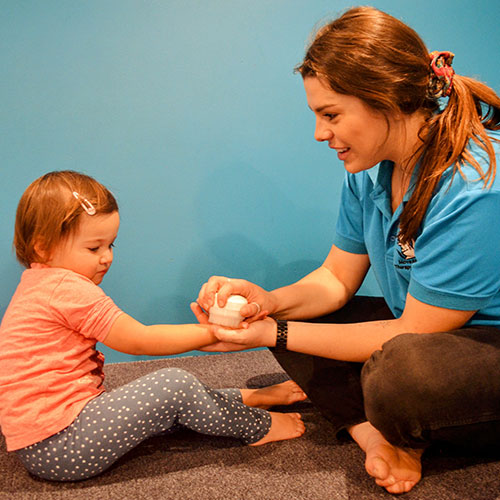Wilbarger Protocol (Brushing)
The Wilbarger Protocol—also called brushing therapy—involves brushing the body with a small surgical brush throughout the day. Developed by doctor and occupational therapist Patricia Wilbarger, brushing is for individuals who are extremely sensitive to touch, fear or resist being touched, have difficulty transitioning between activities or are lethargic.
Parents of children with autism spectrum disorder (ASD) have reported seeing decreases in sensory defensiveness and anxiety as a result of using this technique. Benefits may include improved ability to transition between daily activities, improved attention span, a decreased fear or discomfort of being touched, enhanced coordination and better self-regulation.

Treatment
The brushing protocol may be a part of sensory integration therapy, in which case the child will also be directed to work with sensory toys and tools.
To administer brushing therapy:
The first step involves using a soft, plastic, sensory brush on the child’s skin, applying firm pressure as in a deep pressure massage. Brushing starts at the arms and works down to the feet, while avoiding the highly sensitive face, chest and stomach areas.
Brushing is initially recommended for 2-3 minutes a session, once every 2 hours, while the child is awake. Therapists can re-assess the level of brushing after about two weeks, but may suggest it continues as long as the child benefits.
After brushing therapy, therapists may also prescribe gentle joint compressions for a count of 10 to the shoulders, elbows, wrists, fingers, hips, knees/ankles and sternum. Self-administration of joint compression by older individuals can be done by pushing against walls, doing jumping-jacks, push-ups or jumping on a trampoline.
Finally, the therapist may suggest the Oral Tactile Technique (OTT), swiping a finger along the inside of the person’s mouth. This is helpful for children who may have trouble with foods because of the texture or may hate having their teeth brushed.
Learn more about Occupational Therapy at CFI…
